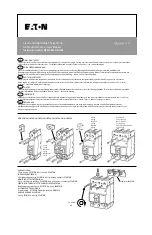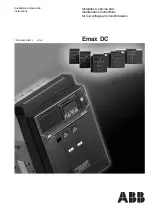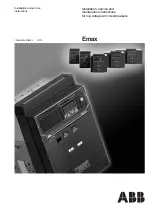
NOTICE!
Risk of damaging the I/O module!
The outputs are not protected against short circuits and overload.
–
Never short-circuit or overload the outputs.
–
Never connect the outputs to other voltages.
–
Use an external 3 A fast-protection fuse for the outputs.
The module provides several diagnosis functions (see Diagnosis
The meaning of the LEDs is described in the section Status LEDs
I/O configuration
The module itself does not store configuration data. It receives its parameterization data from
the master device of the I/O bus (CPU or communication interface module) during power-up of
the system.
Hence, replacing I/O modules is possible without any re-parameterization via software.
If the external power supply voltage via UP/ZP terminals fails, the I/O module
loses its configuration data. The whole station has to be switched off and on
again to re-configure the module.
Parameterization
The arrangement of the parameter data is performed with Automation Builder software.
The parameter data directly influences the functionality of modules.
For non-standard applications, it is necessary to adapt the parameters to your system configura-
tion.
Name
Value
Internal
Value
Internal
Value,
Type
Default
Min.
Max.
EDS Slot
Index
Module ID Internal
6145
1
)
WORD
6145
0x1801
0
65535
xx01
Ignore
module
No
Yes
0
1
BYTE
No
(0x00)
Parameter
length
Internal
1
BYTE
0
0
255
xx02
2
)
1
) with CS31 and addresses less than 70, the value is increased by 1
2
) Value is hexadecimal: HighByte is slot (xx: 0...7), LowByte is index (1...n)
GSD file:
Ext_User_Prm_Data_Len =
Ext_User_Prm_Data_Const(0) =
0x06
0x18, 0x02, 0x00, 0x02, 0x00, 0x00;
Device specifications
I/O modules > Digital I/O modules
2022/01/31
3ADR010278, 3, en_US
207














































